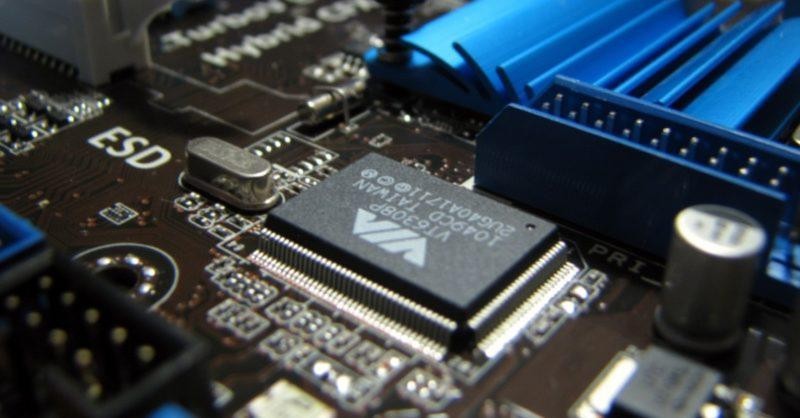Small European tech companies might be about to lose out if the European Commission’s new patent guidelines favour giants like Qualcomm and Ericsson, writes Morgan Reed, president of the Washington DC-based App Association (ACT).
Imagine a new economic sector in Europe worth double the yearly GDP of Belgium. Imagine it was driven by small entrepreneurial European tech businesses. Sounds great, doesn’t it?
This is the potential of the fast developing internet of things (IoT) according to the European Commission, which values it at €1 trillion a year by 2020.
Except there’s a problem. There’s a debate raging over some of the wireless technologies underpinning the IoT and how much patent holders can charge for them.
European policymakers are right now drafting guidelines for how best to spur Europe to realize the massive potential of IoT. The problem is they appear to be leaning towards the big patent holders who sit upstream in the development process.
Unless they get the balance right, they could stunt Europe’s ability to develop its globally competitive IoT businesses, opening the door for US or southeast Asian businesses to take the lead.
The outcome will play a major role in determining how successful Europe will be in harnessing the economic, social, health and many other benefits IoT promises.
On one end are global businesses like Qualcomm, Ericsson, and Nokia that make money from licensing their patent-protected technologies as part of the open wireless standards that are often used to connect the “things” to the internet.
At the other end are the companies, large and small, coming up with imaginative “things” – devices and services – to connect.
For example, a French tech entrepreneur has developed a train-mounted camera that films rail tracks and reports any hazards in real time via the internet, such as branches that are getting dangerously close to the trains.
A small US firm invented a bath mat that detects diabetic foot ulcers before they are visible, avoiding amputations that would result without early detection.
In Europe, a small team of researchers is developing digital sniffer dogs to help law enforcement authorities avert terrorist attacks using sensors that detect explosives. These are a few of the extraordinary ways IoT will impact our lives.
Moreover, European cities like Stockholm and Amsterdam are on the forefront of leveraging IoT technologies to improve city services, traffic management, and environmental sustainability.
No one argues that the Qualcomm’s of this world shouldn’t be fairly rewarded for their contribution to the IoT innovation process. However, these chip makers are trying to to convince the regulators in Europe that they alone are the IoT innovators.
Qualcomm and its allies aren’t content just to get a fair payment for the patented innovations they contribute or the communication chips they manufacture. They also want a percentage of the selling price of the end products.
It’s a bit like a farmer demanding a proportion of the bill a top-end restaurant charges its customers after its chef uses his or her talent and knowledge to turn the farmer’s vegetables, bought at a fair price, into a gastronomic delight.
Does that sound fair? It does if you are Qualcomm, Ericsson, and Nokia.
After voluntarily committing to license their patented technologies under fair, reasonable, and non-discriminatory (FRAND) terms, they now covet the profits of the IoT innovators behind incredible new products.
At the heart of the matter are ‘standard essential patents’ (SEPs) – patents protecting inventions, which are essential for products to meet agreed standards.
SEPs are deemed so important they need to be licensed by the producer to third party users at ‘fair and reasonable’ prices. This in turn is designed to encourage interoperability of products and facilitate innovation downstream.
The Commission is expected to publish its guidelines at the end of the summer. There is a growing concern that the communication will favour use-based pricing, abandoning the FRAND principles that are applied to most standard essential patents today.
What’s more, the policymakers appear to have been steered to believe the downstream companies developing new IoT devices are not inventors, but merely ‘implementers’ freeloading off the chips built by Qualcomm, Ericsson, and Nokia.
The reality is in fact the opposite. The real innovators in the IoT sector are the downstream companies imagining new products that no one else has thought of. The communications chip makers want a cut of their ingenuity, their risk-taking, and their investments. In that sense, the chip makers are asking European policymakers to help them “freeload” off the downstream players.
The amount spent on research and development (R&D) by downstream innovators speaks volumes. Qualcomm, Ericsson, and Nokia spend a tiny fraction of the amount spent by downstream developers both big and small that are inventing new uses for sensors that use the communication chips.
When you compare Qualcomm and company’s R&D investment as a percentage of sales with that of small European businesses that have thrown themselves into the IoT domain, their contribution looks even smaller.
And for SMEs it’s not just the price tag that’s at issue – there’s a potentially bigger implication. If downstream innovators have to pay more for their chips according to how important their invention is and how many units they sell – without ever really knowing what the bill might be – the uncertainty would deter investors in the company and make it almost impossible for them to forecast costs.
European regulators are hearing two very different arguments about the pricing of standard essential patents. Who’s telling the truth? It could help to follow the IoT money. If use-based pricing of SEP licenses for communications chips is endorsed by the European Commission, the trail will lead all the way from European consumers’ pockets to San Diego, home of Qualcomm.


































